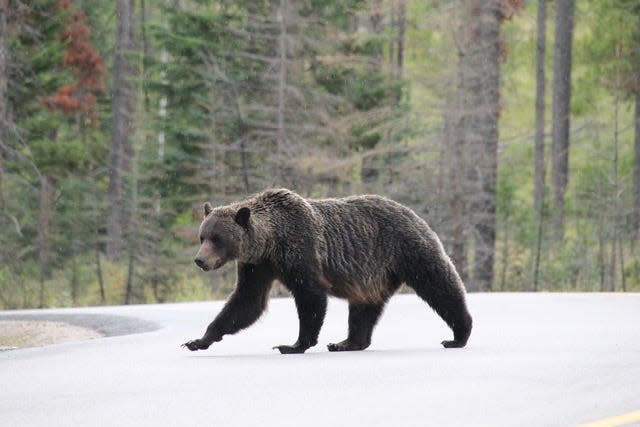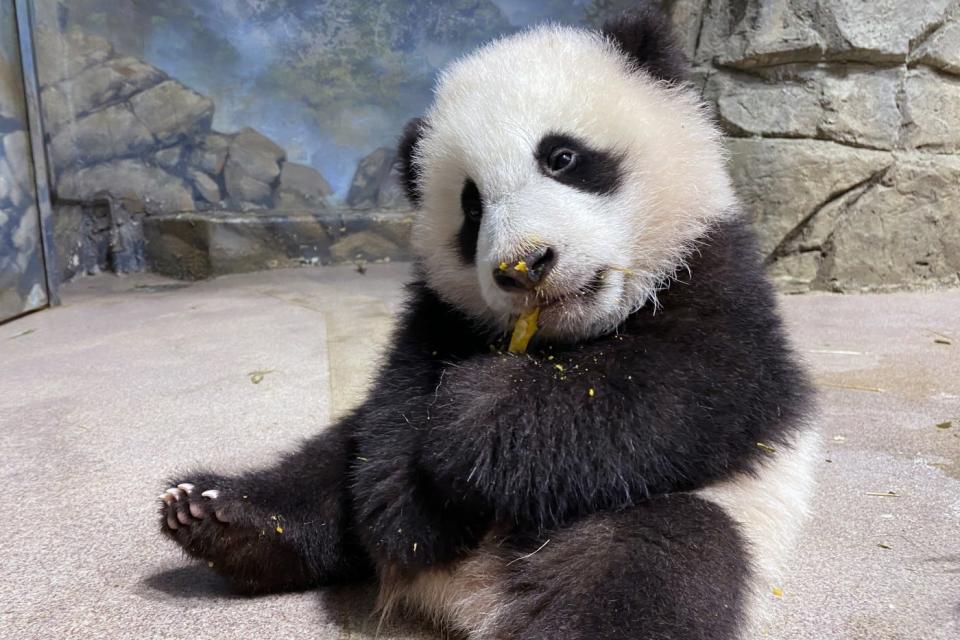Grizzly, polar, black and pandas: Everything you need to know about bears

Did you know that there are nine recognized members of the bear family worldwide, but with many subspecies that cannot be covered in this limited space?
All of them are classified as coming from the scientific family Ursidae, and they are found all over the world with the exception of Australia. Their size varies from four feet long and weighing around 70 pounds, but can be as big as eight feet long and more than 1,000 pounds.
These critters, while sticking to their own general territories, can be found in North and South America, Europe and Asia. And, as bears go, they are typically solitary with the exception of mother bears with cubs. They all have an exceptionally good sense of smell, relatively poor eyesight and keen hearing. And, they all share nonretractable claws and short tails.
Bears are generally long lived as mammals go. All species average around 25 years if left in the wild. In captivity they generally can live for 50 years. On a personal note “Smokey the Bear” was found and rescued as a cub during a wildfire in New Mexico, and that little male grew up and lived for 55 years in the National Zoo in Washington, DC.
The polar bear
So what are the various bear species? The polar bear is the largest member of this family, with adult males often exceeding 1,000 pounds. They live “circumpolar” around the Arctic Ocean, and are classified as “marine mammals.”
They are also the largest carnivorous animal on earth. Because of their normal nomadic traveling they are rarely observed by most humans. Their primary food source is seals, but they also have been known to feast on beached whales and other marine mammals.
The females of these snowbears will have from one to four cubs every second year after they reach sexual maturity in their third year. And the cubs stay with them for two years as the momma bears teach them everything they will need to know in order to successfully survive.
The grizzly bear
Older grizzly bears are typically brown, though their fur in mature animals can appear to be white-tipped, or grizzled, which gives them their name. Males can grow to around 800 pounds, but females rarely exceed 600.
Their diets consist of just about anything edible such as large and small animal carcasses, berries, nuts, grubs and fish. The members of this species in parts of Alaska eat lots of migrating salmon in the late summer/fall months, and put on a tremendous quantity of fat in just a few months before hibernation.
Despite their impressive size, these bears have been clocked running at up to 30 mph. They require a lot of space, especially in areas with poorer habitat. Their home range can encompass from as little as 100 up to 600 or more square miles.
Ever since they were listed as endangered in 1975, the population of grizzly bears has grown. While there is no accurate (reliable) population figures, their numbers have increased rather dramatically everywhere they are found.
The giant Panda

The giant Panda is a true member of the bear family. They are best known for their starkly black and white fur coats.
Their typical “homes” are found in temperate forests habitats in the mountains of southwest China. And yes, they do subsist almost exclusively on bamboo. They actually have to eat 25 to 85 pounds of that stuff every day to maintain their best body weight.
They use their enlarged wrist bones to function as opposable thumbs. A newborn cub can be around five inches long. But the small size quickly becomes a 200-pound female or a 300-pound male. And despite their apparent large adult size they are incredibly good tree climbers.
The Sun Bear
The Sun Bear, which is also called a “Honey Bear,” is without any doubt, one of the funniest looking critters in the bear family. It is also the least well-known and smallest members of the bear family. That is at least due in part because of poaching. They are found in dense woodland forest of Southeast Asia.
These critters love honey anywhere they might find it. They get their name from a bib-shaped white or golden patch on their chest. Legends abound that this mark represents the rising sun. An adult male (and females) rarely exceeds 200 pounds. And they are nocturnal, doing their hunting for birds and small mammals only at night.
The black bear
The American black bear is a well-known critter across this country and Canada. They are common almost everywhere they are found, so I will not spend too much time on them here.
Suffice it to say they are found almost everywhere, from New Jersey’s Pine Barrens to California’s Santa Cruz valley. They might live in swamps, flat forests, mountains or just about anywhere if suitable food and cover exists.
The Spectacled bear
Andean Bears, or Spectacled bear, South America’s only bear species, is usually elusive, shy and peaceful. They are exceptional climbers, and avoid all human contact. Their most recent estimated population estimate is under 12,000 animals.
Unrestricted hunting and habitat loss are the primary reasons for this unique species most likely heading for membership in the Endangered Species Act.
The Asiatic Black Bear
The Asiatic Black Bear sports a broad white patch across its chest. Otherwise you might think you were back in Pennsylvania if you observed one.
They are around the size of a three year old American black bear. They also sometimes sport a grey muzzle. And their choice of habitat is not all that different, either. They live mostly in forested areas, most often in hills and mountainous regions.
They den in the northern regions of their Asiatic range, just like our native bears. And their diet consists of items like insects, worms, bees’ nest, various fruits, small mammals, and even carrion. And get this. They are known to occasionally kill local livestock, just like our black bears. I wonder if the Asiatic black bears and our black bears could be closer than kissing cousins.
The brown bear
The brown bear is found almost circumpolar. Not only are they in Alaska, there are brown bear across parts of Europe and Asia. For many years they were grouped with grizzlies, and not as a distinct species. Alaskan brown bears are generally bigger than grizzly bears, most likely because of their high fish diets during the fall months.
Their primary habitat is in forests and mountains. They are solitary critters, excepting of course sows with cubs that stay together for two years before the sows again get the urge to breed.
Even when the bears gather in the summer to greet the hordes of salmon that are coming inland for their own love-fest these big bears have a strong pecking order. The biggest males get the best fishing spots with little protests, and smaller males and females get whatever fishing waters that may still be available.
Before the fish arrive brown bears will feed on just about anything that might be available. This includes other animals such as rodents or elk or moose or even other (smaller) bears. They also munch on berries, fruits, nuts, and other organic matter. In a land of plenty they rarely go hungry.
Len Lisenbee is the Daily Messenger’s Outdoor Columnist. Contact him at lisenbee@frontiernet.net.
This article originally appeared on MPNnow: Grizzly, polar, black, pandas: Everything you need to know about bears

